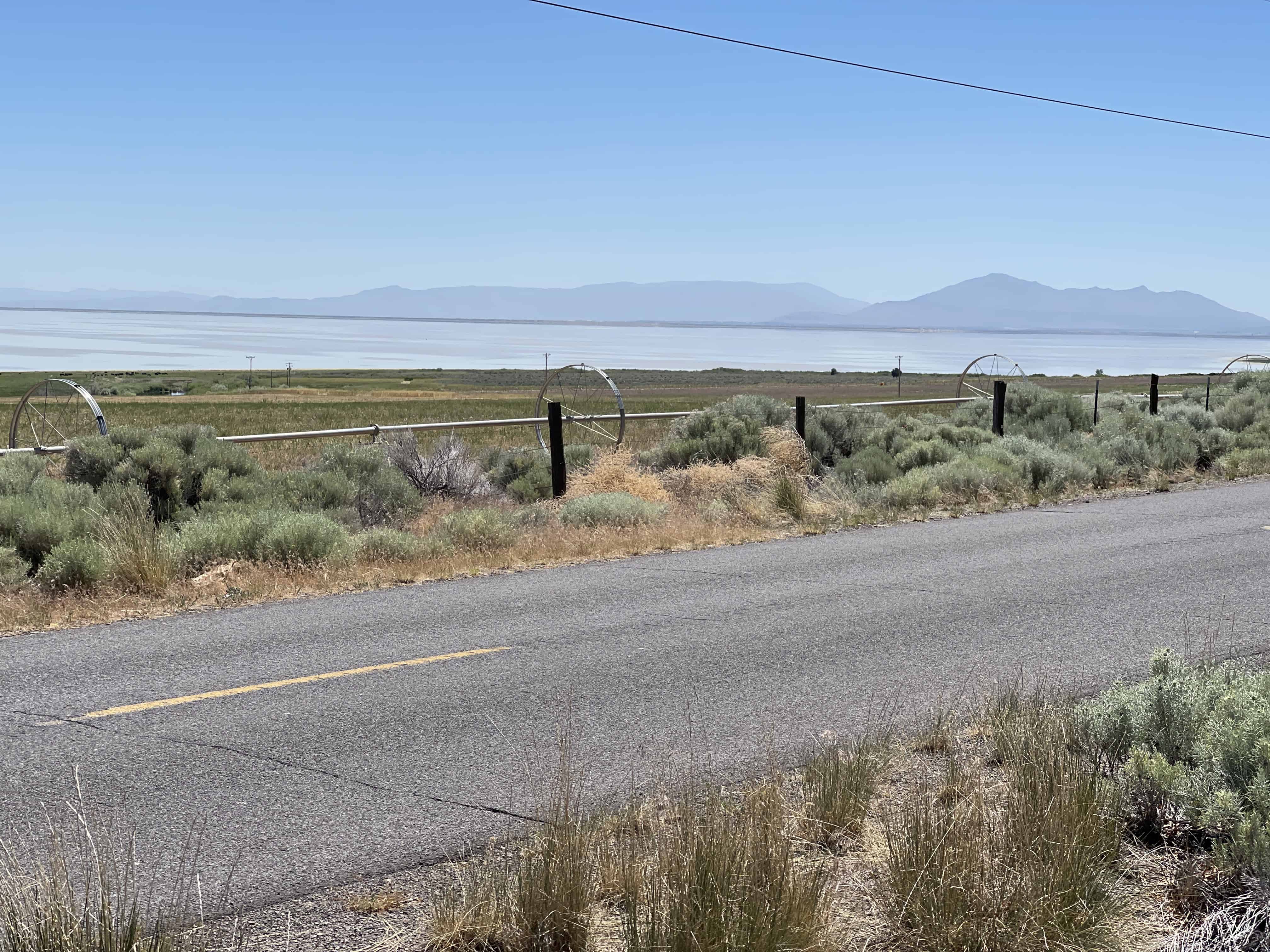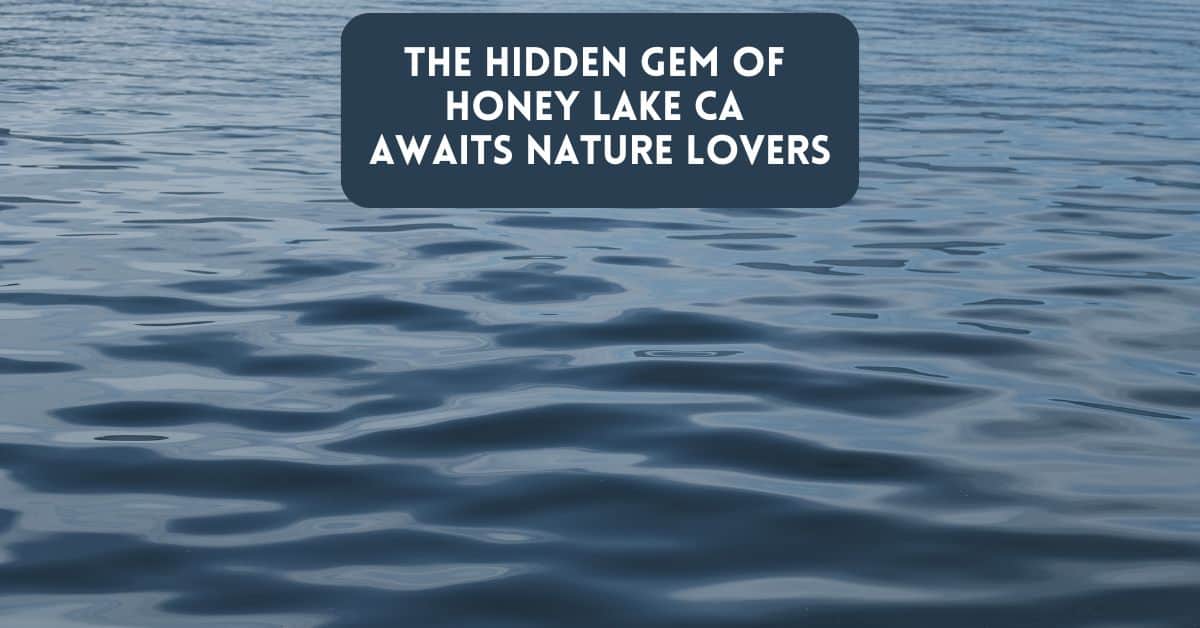The Hidden Gem of Honey Lake CA Awaits Nature Lovers
Nestled in northeastern California, Honey Lake is a natural wonder that captivates nature lovers. With its fluctuating water levels and distinctive name, this enigmatic lake has a rich history and serves as a vital habitat for local wildlife. Whether you’re an avid bird watcher, a fishing enthusiast, or a curious traveler, Honey Lake in California is worth knowing. In this blog post, we will explore the various facets of Honey Lake CA, from its location and history to the activities you can enjoy there.
The Places Where We Go contains affiliate links and is a member of the Amazon Services LLC Associates Program. As an Amazon Associate, we earn from qualifying purchases at no extra cost to you when you purchase using one of these Amazon links. Read our disclaimer and privacy policy for more information.

Description of Honey Lake
Honey Lake is a large, shallow, and seasonal endorheic basin, meaning it has no outflow to other bodies of water. Situated in Lassen County, the lake spans about 75 square miles. It sits in the arid high desert region, surrounded by sagebrush-covered hills and the towering peaks of the Sierra Nevada. Due to its shallow nature and high evaporation rates, the lake’s size and water volume vary significantly throughout the year and over different seasons.
The surrounding landscapes are characterized by vast expanses of wetlands, surrounded by rolling hills and distant mountain ranges. The lake is a haven for various species of birds, making it a prime spot for bird watching. The area’s tranquility provides the perfect backdrop for a day of relaxation and exploration. The flora and fauna around the lake are as diverse as they are beautiful, offering a picturesque setting that changes with the seasons. During the winter, bald eagles can be observed in the area. In spring, it is common to spot threatened sandhill cranes and other sensitive species, including the bank swallow and white-faced ibis.

Shannon1, CC BY-SA 4.0 https://creativecommons.org/licenses/by-sa/4.0, via Wikimedia Commons
Where is Honey Lake?
Honey Lake is located in the northeastern region of California, close to the border with Nevada. Specifically, it lies within Lassen County, approximately 20 miles from the city of Susanville and 50 miles north of Rena, Nevada. The lake is part of the Honey Lake Valley, known for its vast open spaces, ranching, and diverse wildlife.
The lake covers an area of about 75 square miles, making it one of the largest natural lakes in the state. Its geographical coordinates are approximately 40°15′N latitude and 120°20′W longitude. The nearest major highways are U.S. Route 395 and California State Route 70, providing easy lake access. Despite its remote location, Honey Lake is relatively easy to reach.
Why is it called Honey Lake?
The origin of the name “Honey Lake” is subject to various interpretations. The most commonly accepted interpretation is that its name is derived from the honeydew produced by the abundant aphids that inhabit the area. Another theory suggests that early settlers named the lake for its honey-colored waters, resulting from the combination of algae and minerals in the shallow basin. Yet another explanation is that the name reflects the abundance of wild bees and their hives in the surrounding area, discovered by pioneers and settlers. Regardless of the exact origin, the name “Honey Lake” perfectly encapsulates the charm of this natural paradise.
How much water is in Honey Lake?
The water level in Honey Lake is highly variable, influenced by seasonal precipitation, evaporation rates, and the inflow from surrounding streams and springs. On average, the lake holds around 100,000 to 150,000 acre-feet of water. However, during periods of heavy rainfall or snowmelt, the water levels can rise considerably, expanding the lake’s surface area and depth. Conversely, in times of drought and dry periods, the water levels can shrink dramatically, exposing vast mudflats and salt flats that alter the lake’s ecosystem.
The lake is relatively shallow, with an average depth of about 3 to 6 feet, making it susceptible to changing levels. The fluctuations throughout the year make Honey Lake an ever-changing landscape. Despite these changes, Honey Lake remains a vital habitat for numerous species of fish and birds.
Can you fish at Honey Lake?
Yes, fishing is one of the popular activities at Honey Lake. When the lake has sufficient water, it supports various fish species, including catfish and bass. However, fishing opportunities can be limited during dry periods when the water recedes.
Anglers can enjoy a peaceful day on the water, casting their lines and taking in the beautiful surroundings. The best time for fishing at Honey Lake is during the spring and early summer months when the water levels are higher and the fish are more active.
It’s important to note that fishing regulations and permits are required, so check the local guidelines before you head out. Anglers interested in fishing at Honey Lake should check current conditions and local regulations before planning their trip.
Getting to Honey Lake
Reaching Honey Lake is relatively straightforward. From Reno, Nevada, take U.S. Route 395 north toward Susanville, California. After approximately 50 miles, you’ll arrive at the lake area. This journey takes roughly 90 minutes.
If traveling from Susanville, take U.S. Route 395 south for about 12 miles. The lake is accessible from several points along the highway, and various dirt roads and trails provide closer access to its shores.
If you’re driving from Sacramento, take Interstate 80 east towards Reno, then head north on U.S. Route 395. From there, follow the signs to Honey Lake, which is about a three-hour drive in total. 4
Public transportation options are limited, so driving is the most convenient way to reach the lake.
We visited Honey Lake en route from Reno to Lassen Volcanic National Park. If you’re interested in visiting the national park from here, check out our post on The Best Time To Visit Lassen Volcanic National Park.
Visitors should be prepared for the high desert climate, bringing plenty of water, sun protection, and appropriate outdoor gear.
Where To Stay Near Honey Lake
Check out our interactive map to find lodging near Honey Lake and Milford, California.
Conclusion
Honey Lake, CA is a hidden treasure that offers a unique blend of natural beauty, diverse wildlife, and recreational opportunities. For nature lovers, it’s a destination that promises tranquility and adventure in equal measure.
Whether you’re interested in birdwatching, fishing, or simply enjoying the serene landscape, Honey Lake provides a fascinating destination for outdoor enthusiasts. Its ever-changing waters and rich history make it a place worth discovering.
Find Inspiration For Nearby Places
Lassen Volcanic National Park – The Best Time To Visit
Reno Nevada – Weekend Itinerary
Reno Nevada – Annual Festivals Guide

